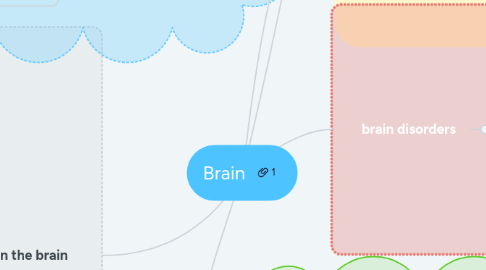Brain
Lara Amiounyにより

1. emotion in the brain
1.1. The article demonstrates, “Think of a time you were stressed. You may remember your heart racing, palms sweating, shoulders tensing up. These reactions are part of the body’s natural stress response. When the brain perceives a situation to be threatening, it triggers a surge of hormones that prepare the body for the challenge” (“Stressed Out?” 30).
1.2. Ahmed explains what happens in the brain during hunger: “Though there are a number of factors that result in hanger, they all stem from low glucose levels in the bloodstream caused by lack of food. While other body organs can function using other nutrients, the brain relies solely on glucose. Thus when the levels start to get low the brain panics and sends instructions to other body organs that release hormones to increase the amount of glucose in the bloodstream.” (“Scientists Say Being 'Hangry' Is Normal”)
1.3. In the article, Mantha discusses lying by saying that “[c]hronic or compulsive lying has largely been considered a mental illness. However, a new study from the University College London suggests that there may be a biological explanation as well. The researchers believe that small, self-serving lies desensitize our brains to the negative emotions connected to dishonesty, paving the way for bigger lies.”
2. the developing brain
2.1. The article claims, “Scientists have done studies of teens playing games to earn rewards. They report there is higher activity in the areas of the brain that control motivation and pleasure compared with those that control thoughtful decision making. This shows that teens may focus more on the rewards and less on drawbacks of decisions. Thinking like this could increase a person’s risk for using drugs” (“Mapping the Brain” 21).
2.2. Ahmed states, “Whenever we make a decision, two critical areas of the brain are involved. The dorsolateral prefrontal cortex that plans for the future, and the striatum that evaluates the rewards of the decision. In teenagers, the connection between the two is still developing. Therefore, the dorsolateral prefrontal cortex's influence on deciding which is the better option is somewhat limited. Hence, teens choose things that are instantly gratifying and get irritable when prevented from doing so” (“Scientists Discover the Obvious”).
2.3. According to Deardorff, “Exercise is also healthy for pre-adolescent brains. In fact, some research suggests that regular exercise can improve academic performance. Hillman’s team found that children ages 7 through 9 who participated in a 60-minute after-school exercise program had better focus, processed information more quickly and performed better on cognitive tests than children who didn’t exercise.”
3. negative effects of drugs on the brain
3.1. “Earlier this year, the American Academy of Pediatrics restated their opposition to marijuana legalization based on its well-documented negative effects on the developing brains of children and adolescents, such as impaired memory and problem solving,” explains Andrew Seaman.
3.2. Dobuzinskis discusses parts of the brain affected by marijuana: “In particular, the study identified changes to the nucleus accumbens and the nucleus amygdala, regions of the brain that are key to regulating emotion and motivation, in marijuana users who smoke between one and seven joints a week.”
3.3. The article explains, “MRI scans show that people who have used harmful drugs for a long time have a smaller prefrontal cortex than non-drug users. This is the brain area that controls decision making” (“Mapping the Brain” 21).
4. brain disorders
4.1. Landhuis writes, “In addition, the company is testing its video game on people with Alzheimer’s disease, autism, depression and traumatic brain injury (TBI) — conditions believed to share a common weakness in the brain system that integrates sensory inputs.”
4.2. “The autistic brain doesn't necessarily work less well than a normal brain, said Iuculano. Instead, it could just be ‘a different brain.’ Autism comes in many forms. It can involve profound retardation, but autistic people can also have exceptional skills or talents, known as ‘savant’ abilities,” proposes Krieger.
5. music's effects on the brain
5.1. Fantano points out an interesting chemical response: “In fact, at the peak emotional time during the song, dopamine is released in the brain’s striatum.”
5.2. According to Dolasia, “Observing the brain activity using an MRI scanner, they noticed an interesting phenomenon - whenever the subject knew the song or the words were easy enough to guess, the auditory cortex filled in the missing part so well, that the person did not realize that the music had stopped and continued humming.”


